

Wat Chalong (Wat Chaiyataram), Phuket
 Go Back - Latest PENANG
Go Back - Latest PENANG  Sights/Streets/New Properties > Malaysia > World | Hokkien : Lessons : Dictionary | YouTube | Facebook | About Me : Contact Me
Sights/Streets/New Properties > Malaysia > World | Hokkien : Lessons : Dictionary | YouTube | Facebook | About Me : Contact Me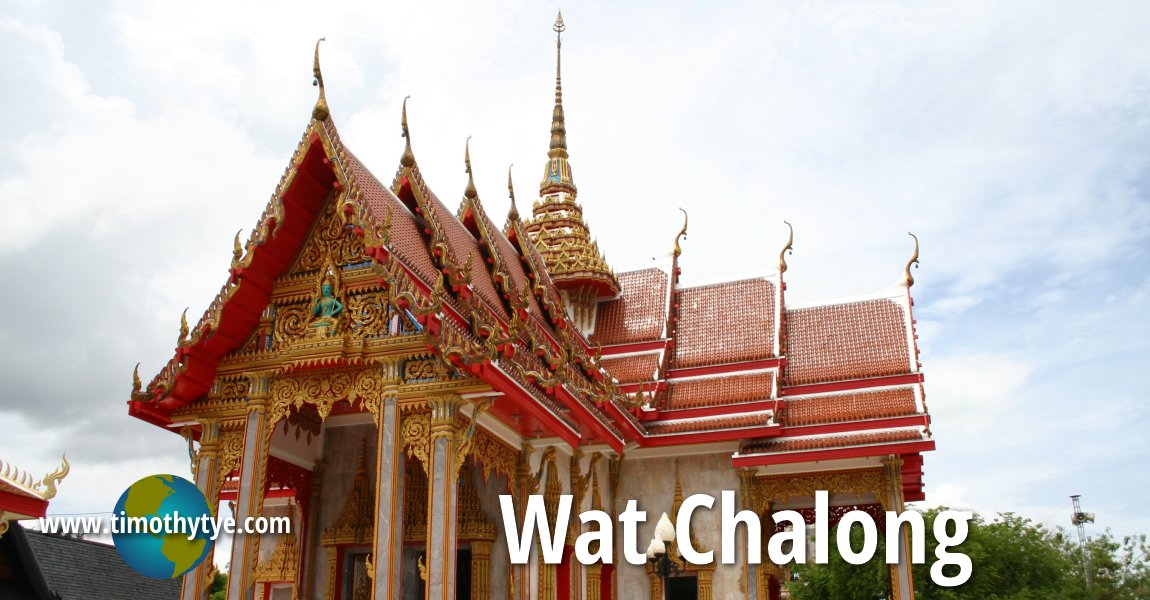 Wat Chalong, Phuket (12 July, 2004)
Wat Chalong, Phuket (12 July, 2004)
Wat Chalong (GPS: 7.84687, 98.33691), or by its official name Wat Chaiyataram, is the biggest Buddhist temple in Phuket. It is located 8 km outside Phuket Town. It is not known for sure when Wat Chalong was first built. Existing records trace the temple's history to 1837, the date it was rebuilt.The temple covers an area of over 500 rai. (Rai, a Thai land measurement, approximates 1600 square meters. Another Thai land measurement is Talang Wah, which is about 4 square meters. 1 rai = 400 talang wah.) Evidence indicates that the original temple structure of Wat Chalong is located on the northern corner of the present temple compound. The only thing that remains from that original temple is a Buddha statue, the Luang Pho Chao Wat image, which is housed in a viharn (assembly hall) between the stupa and the main viharn.

Buddha image in Wat Chalong (12 July 2004)
© Timothy Tye
In 1846, Wat Chalong was accorded royal status, and was given the name Wat Chaiyataram. However, the fame of Wat Chalong came about because of its resident monk, Luang Pho Saem (also written Luang Pro Chaem), who was attributed with great healing powers. He served at the abbot of Wat Chalong until his death in 1908. The abbots who succeeded Luang Pho Saem continued to practise healing, upholding the status and fame of the temple.
In the temple today are three wax models of their revered monks. One of these is Luang Pho Saem, the renowned doctor and setters of bones. The monk helped the people of Phuket put down the rebellion of the Angyee (Chinese coolies) in 1876, during the reign of King Chulalongkorn (Rama V). The other two wax models are that of Luang Por Chuang and Luang Por Gluam.
The buildings in the Wat Chalong complex includes viharn (assembly hall), ubosot (ordination hall), monthop (pavilion) and sala (hall). Most of these were the work of Phra Maha Fuang Suchanonatho, a skilled draftsman who also became an abbot of Wat Chalong in 1978.
A sacred relic of the Buddha is also kept in Wat Chalong. It is housed at a repository beneath the stupa of Phramahathat Chedi (mahathat means "great relic stupa"). The Phramahathat Chedi was built between 1998 and 2001, and follow the architectural style of the famous Tat Phanom stupa of Nakhon Phanom Province.
Wat Chalong can be particularly busy and crowded during feast days which usually take place in mid December. For a period of one week, the temple is transformed into a fair ground.
Getting there
Coming from the north / Phuket City, use Route 4022 followed by Chao Fah Tawan Tok Road, then turn in to Luang Pho Chaem Road. You might need to ask the locals if unsure of direction. Note that three roads surrounding Wat Chalong is numbered Route 4021, which can be rather confusing.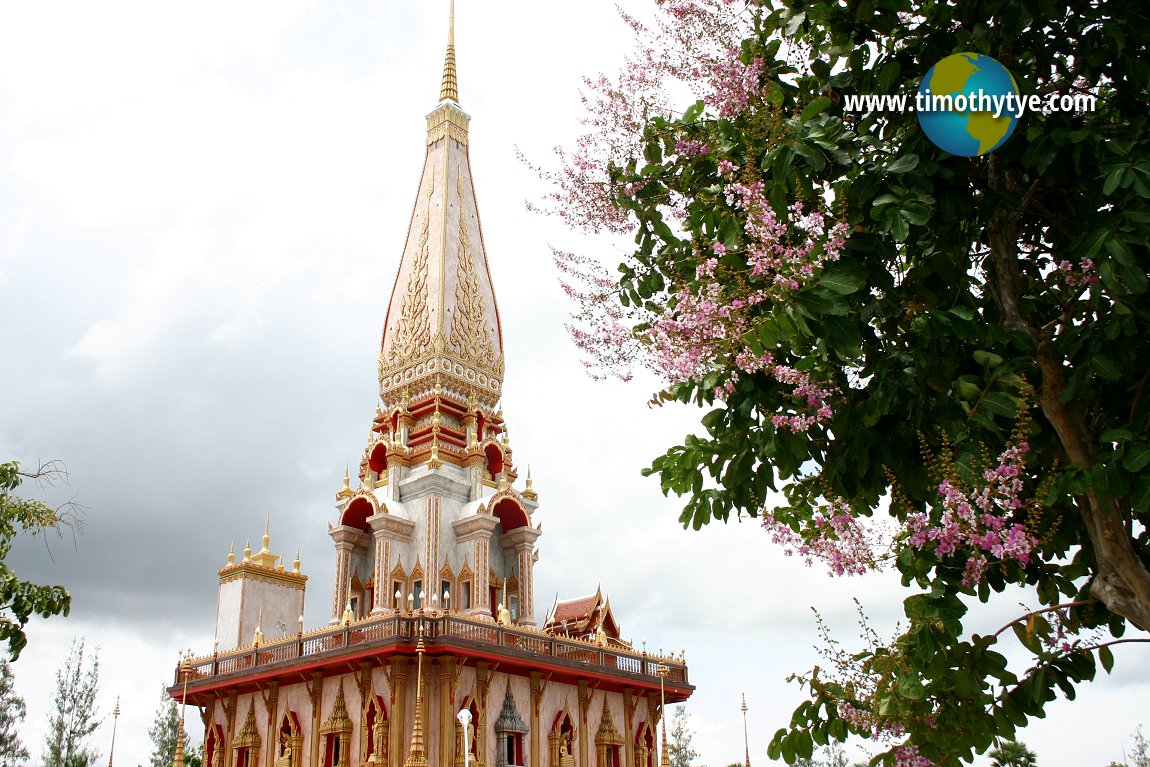 A chedi at Wat Chalong. (12 July, 2004)
A chedi at Wat Chalong. (12 July, 2004)
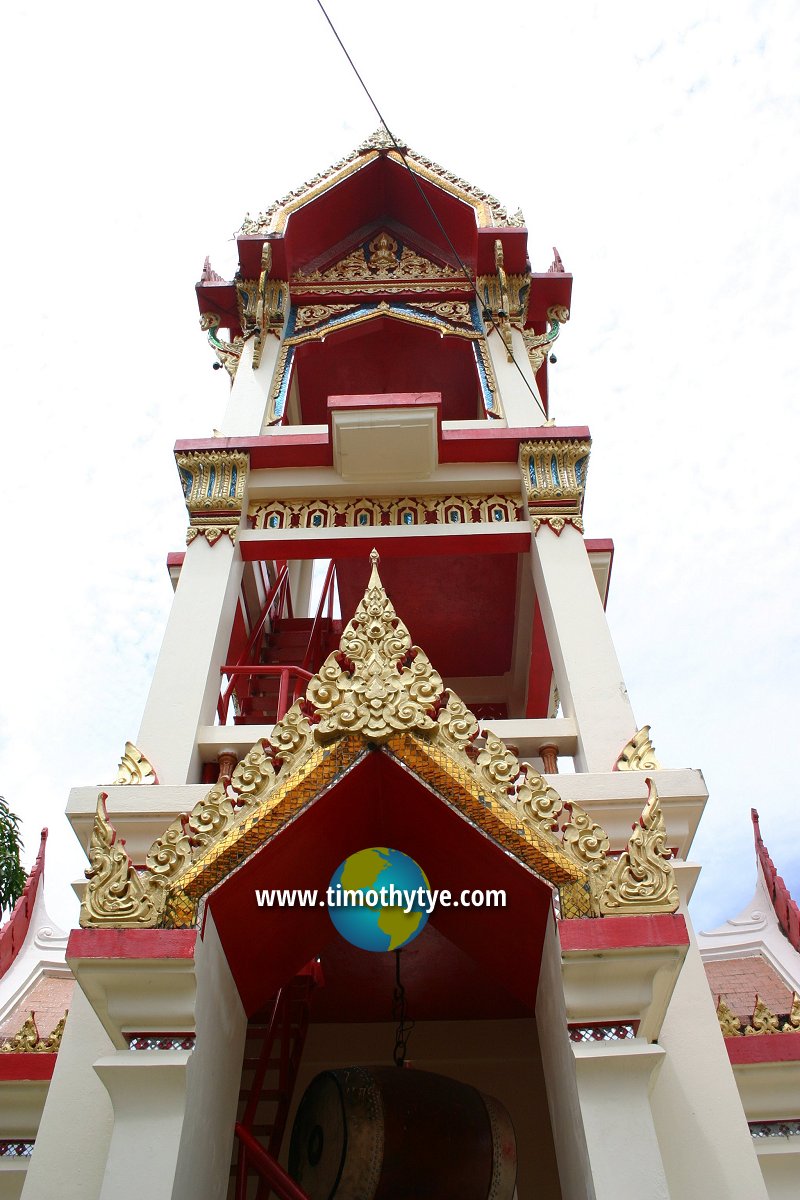 Drum tower of Wat Chalong. (12 July, 2004)
Drum tower of Wat Chalong. (12 July, 2004)
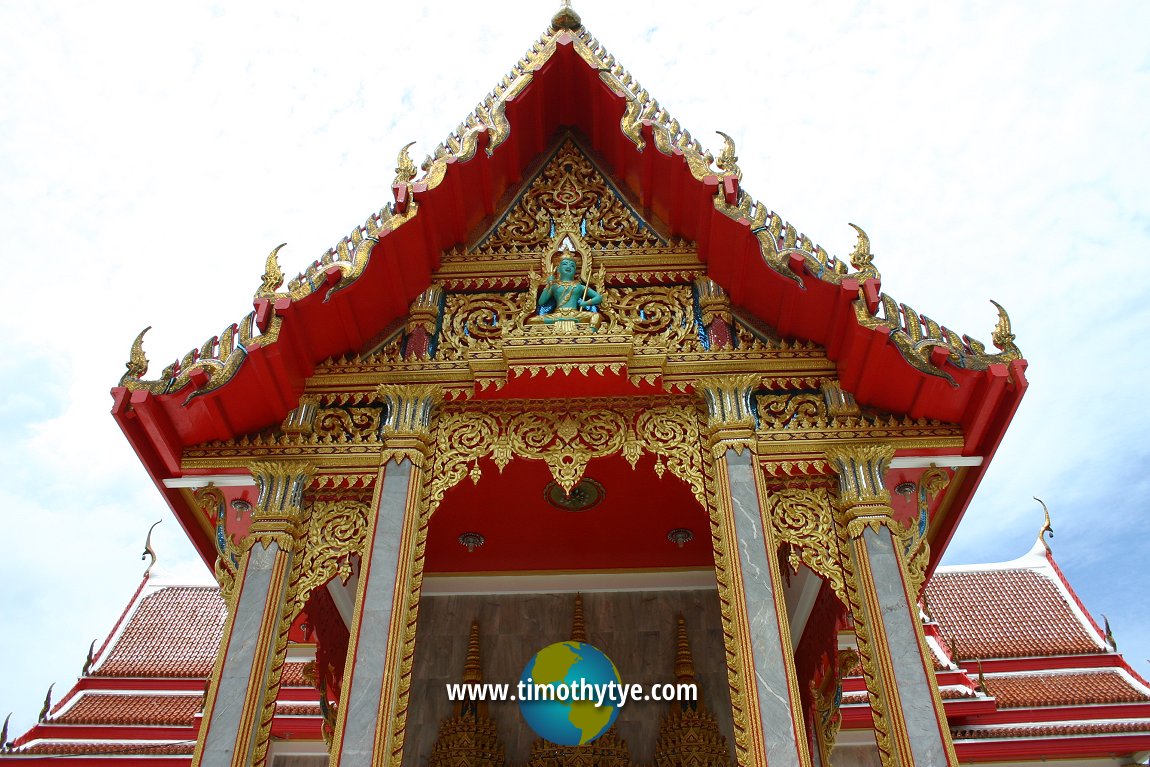 Front façade of the viharn of Wat Chalong. (12 July, 2004)
Front façade of the viharn of Wat Chalong. (12 July, 2004)
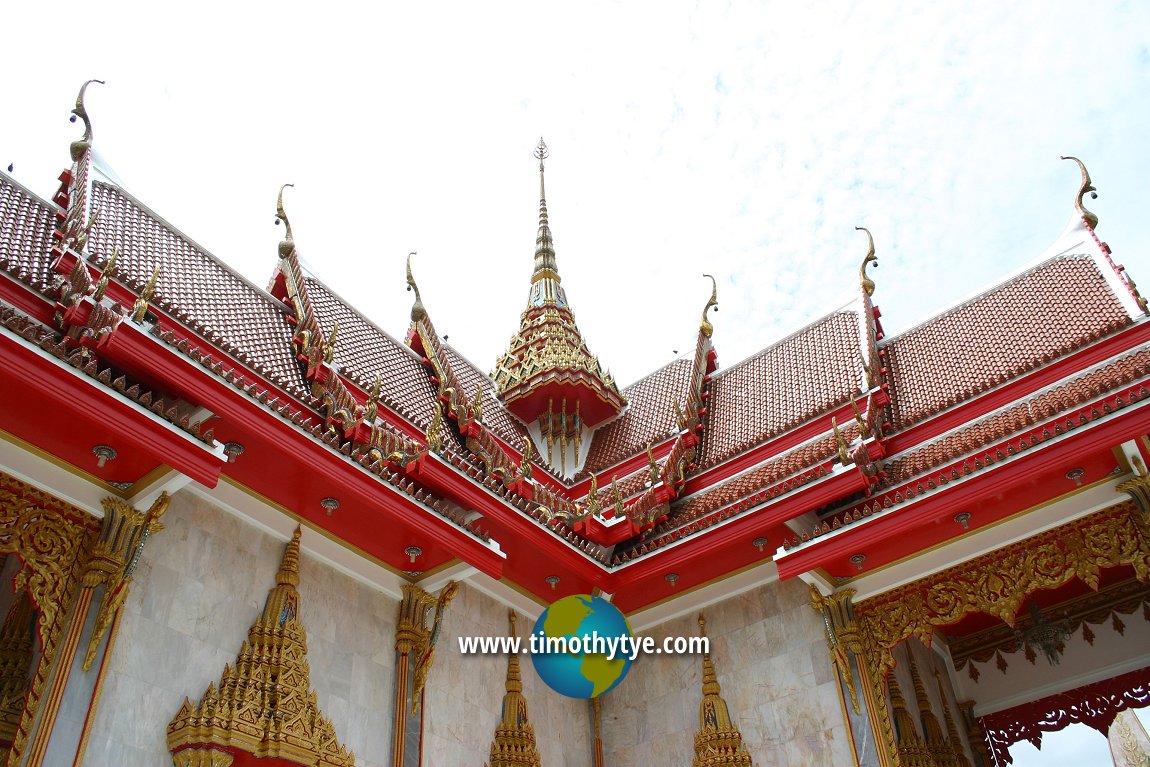 The roof ridge finials, called cho fa and the spire, of Wat Chalong. (12 July, 2004)
The roof ridge finials, called cho fa and the spire, of Wat Chalong. (12 July, 2004)
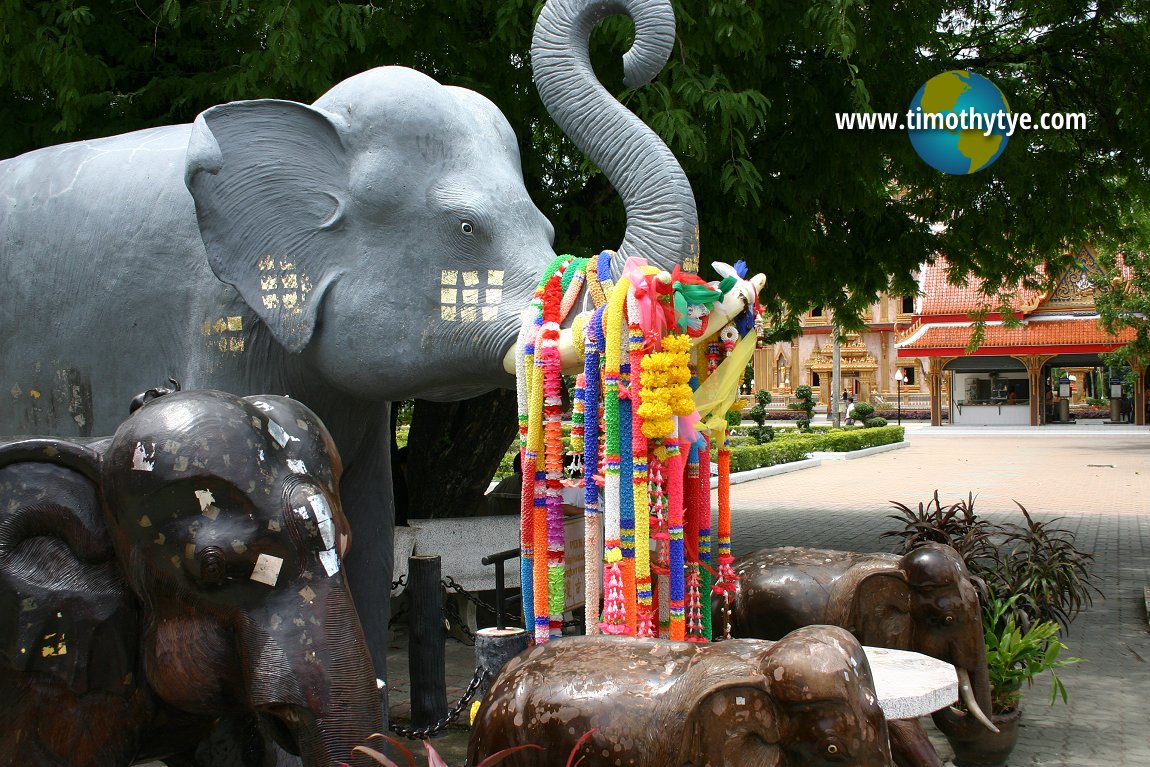 Elephant statue decked with floral garlands. (12 July, 2004)
Elephant statue decked with floral garlands. (12 July, 2004)
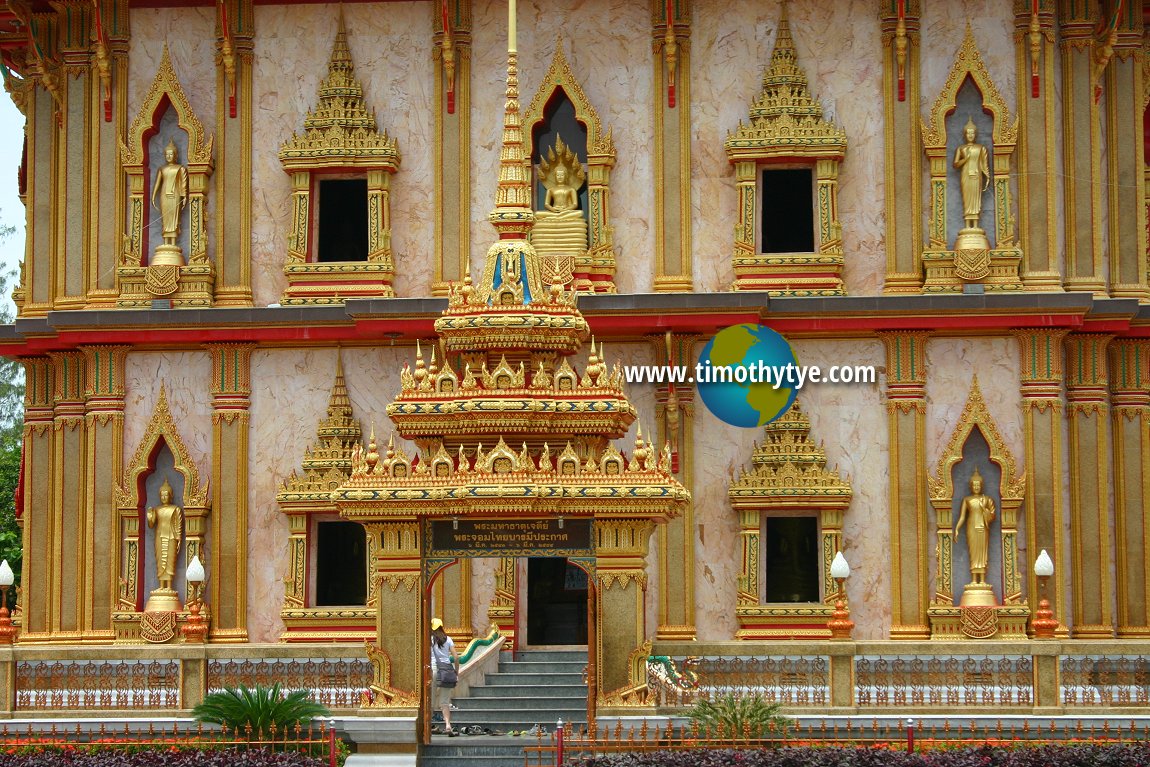 Entrance to the viharn of Wat Chalong. (12 July, 2004)
Entrance to the viharn of Wat Chalong. (12 July, 2004)
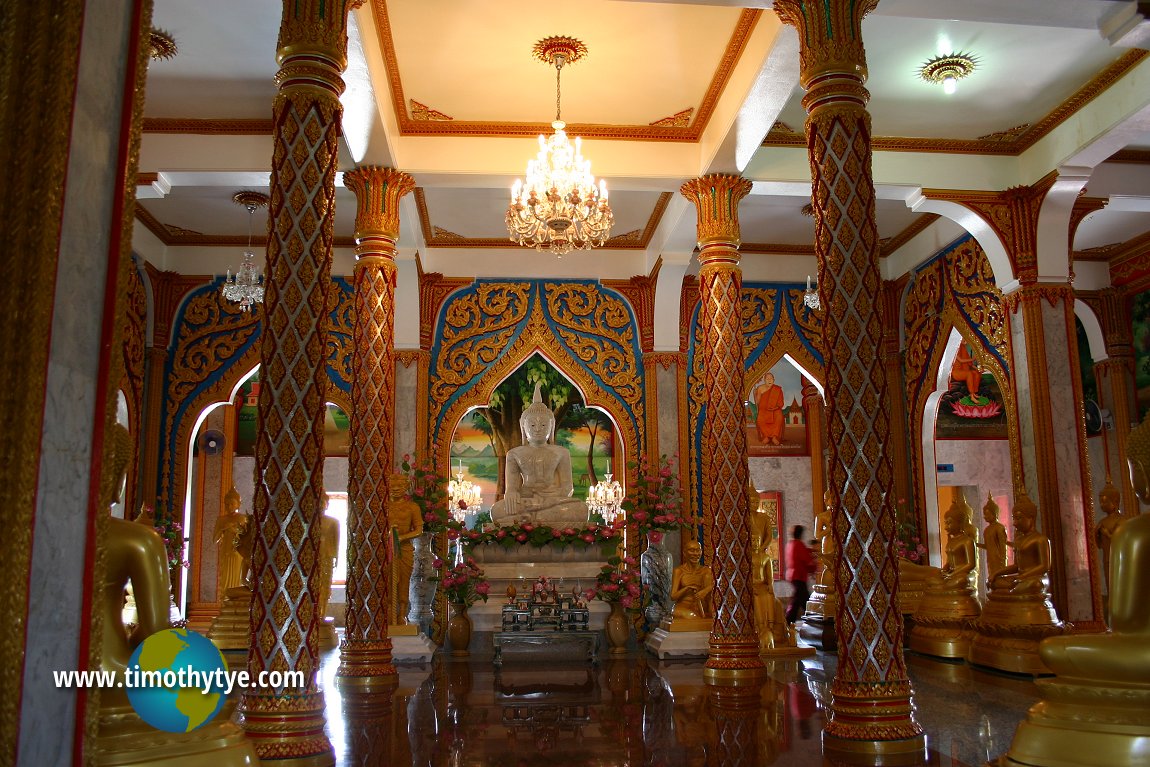 Interior of the viharn, or shrine hall, of Wat Chalong. (12 July, 2004)
Interior of the viharn, or shrine hall, of Wat Chalong. (12 July, 2004)
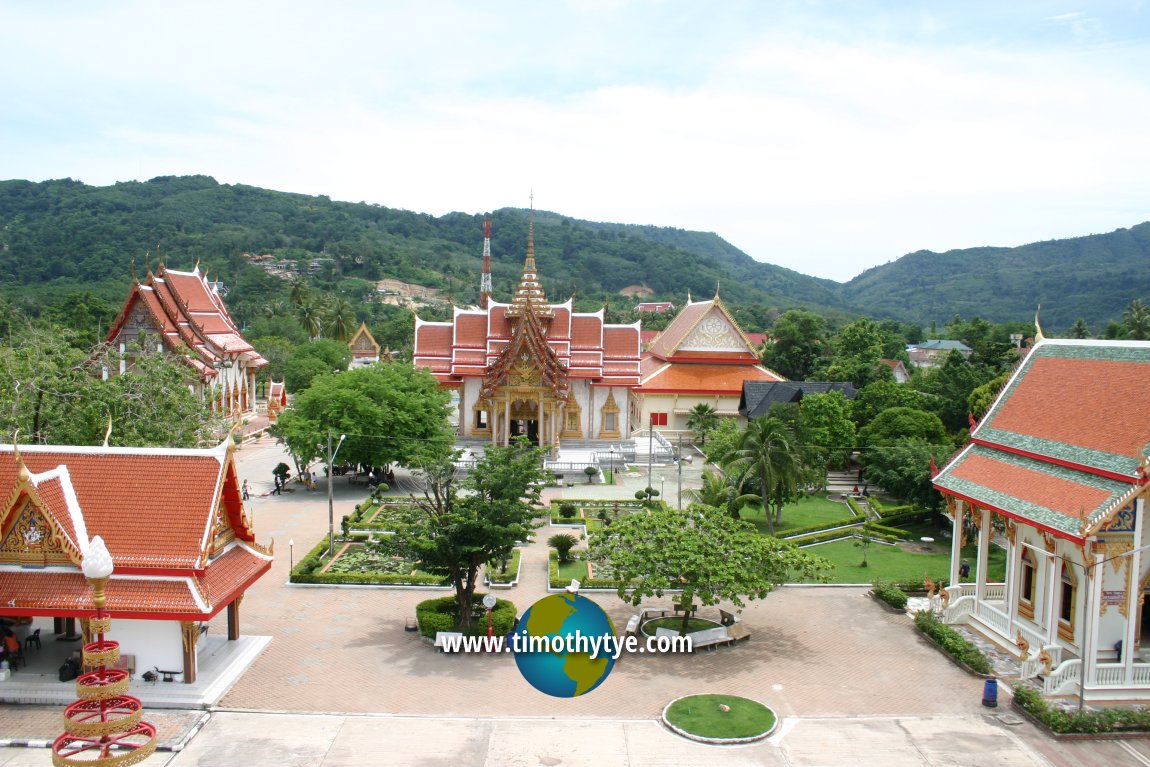 The grounds of Wat Chalong. (12 July, 2004)
The grounds of Wat Chalong. (12 July, 2004)
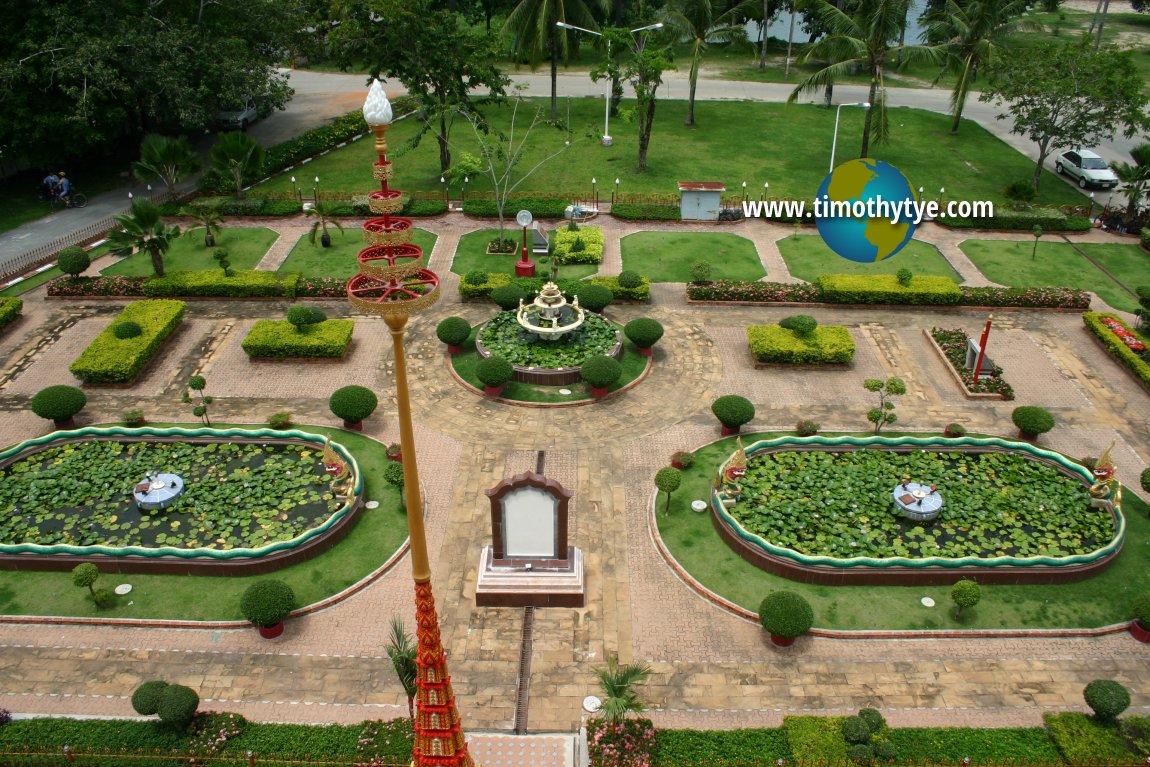 Western-style garden at Wat Chalong. (12 July, 2004)
Western-style garden at Wat Chalong. (12 July, 2004)
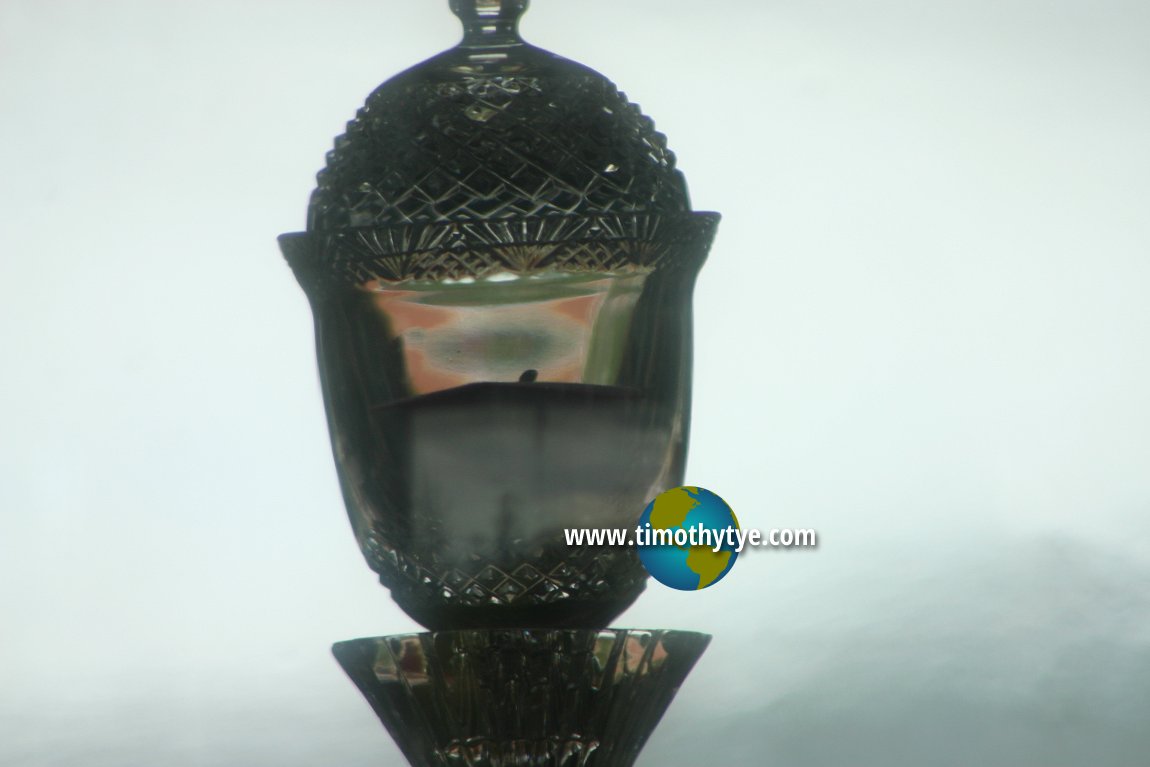 Phra Borom Sareerikatat, the sacred relic at Wat Chalong, said to be a fragment of a bone of the Buddha. (12 July, 2004)
Phra Borom Sareerikatat, the sacred relic at Wat Chalong, said to be a fragment of a bone of the Buddha. (12 July, 2004)
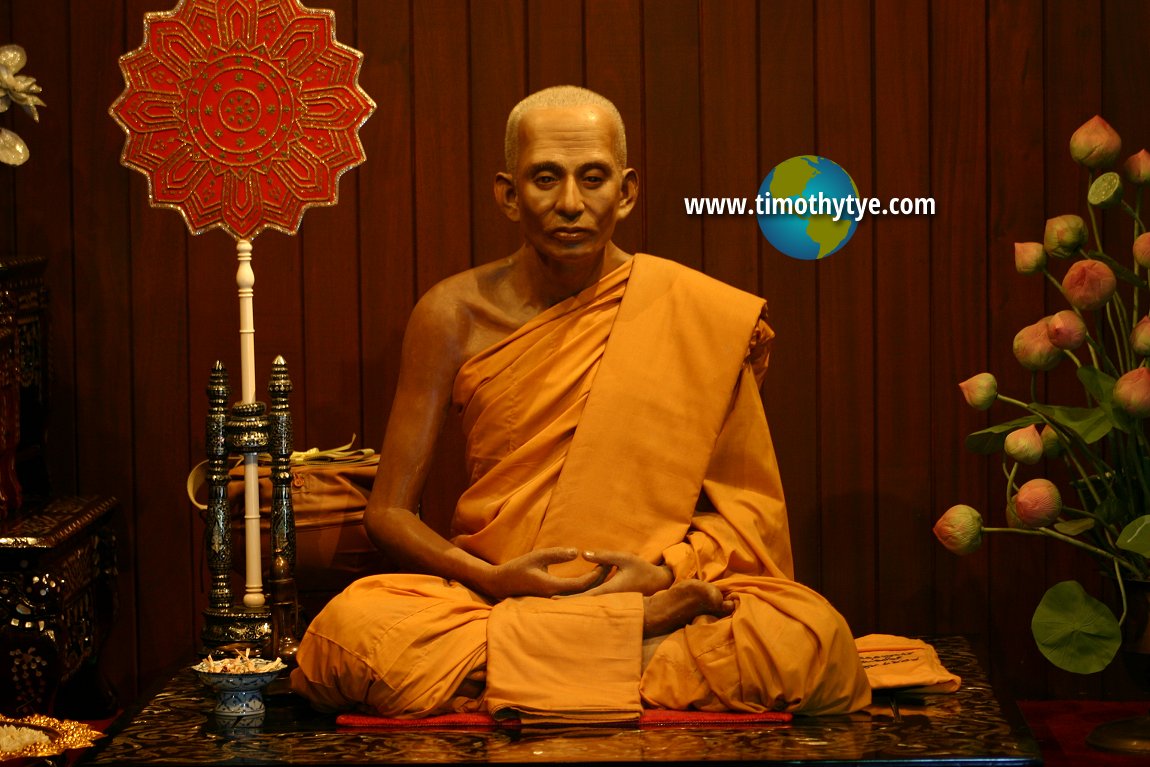 Wax likeness a revered monk at Wat Chalong. (12 July, 2004)
Wax likeness a revered monk at Wat Chalong. (12 July, 2004)
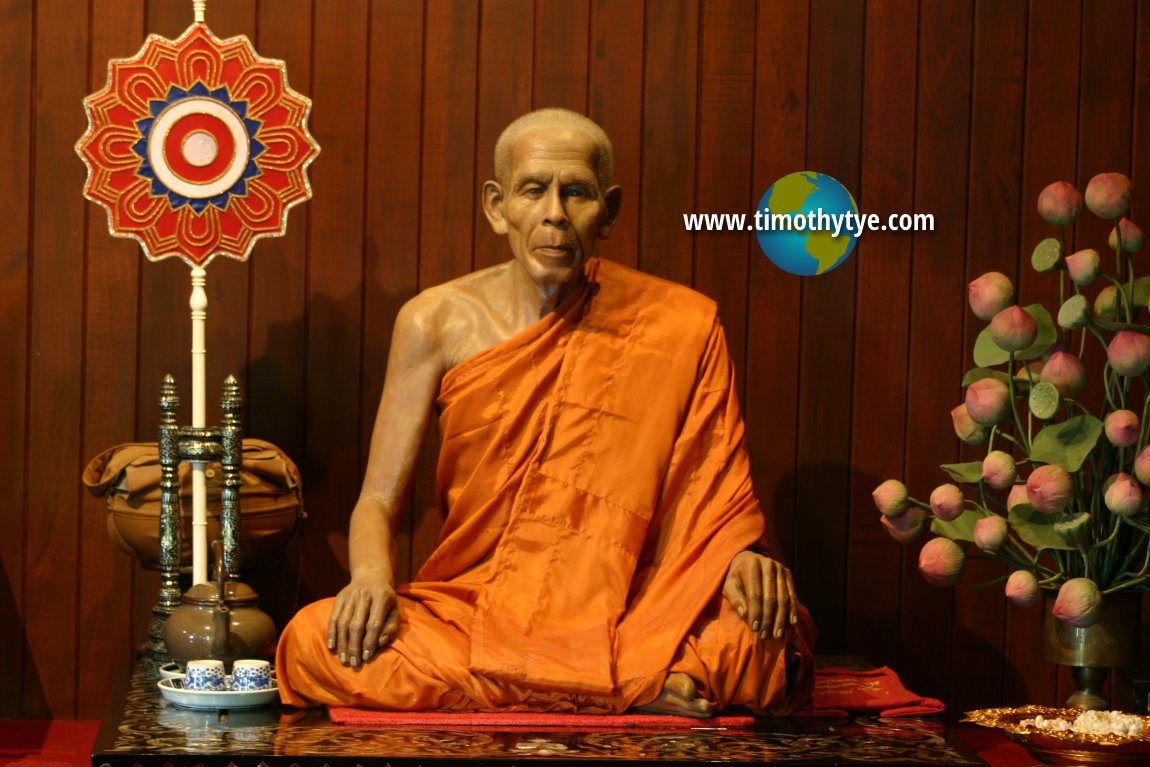 Wax likeness a revered monk at Wat Chalong. (12 July, 2004)
Wax likeness a revered monk at Wat Chalong. (12 July, 2004)
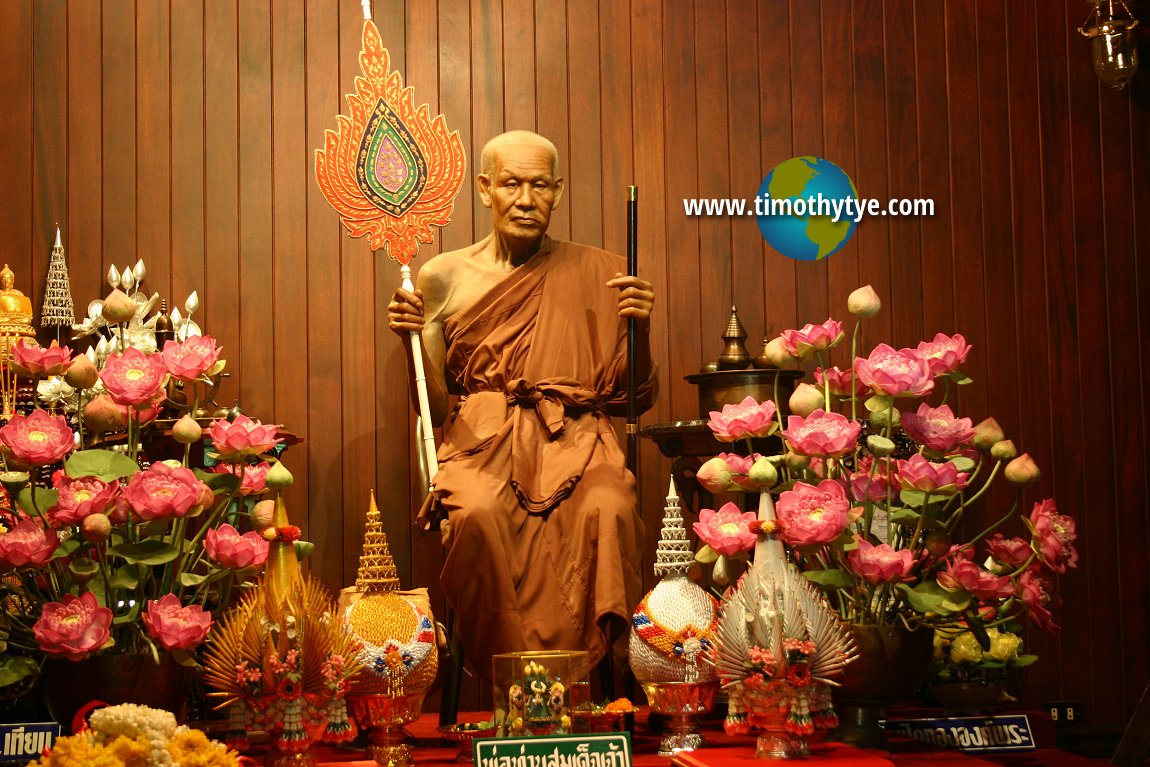 Wax likeness a revered monk at Wat Chalong. (12 July, 2004)
Wax likeness a revered monk at Wat Chalong. (12 July, 2004)
Wat Chalong is  on the map of Sights in Phuket
on the map of Sights in Phuket
 Latest updates on Penang Travel Tips
Latest updates on Penang Travel Tips
 Map of Roads in Penang
Map of Roads in Penang
Looking for information on Penang? Use this Map of Roads in Penang to zoom in on information about Penang, brought to you road by road.Disclaimer
Please use the information on this page as guidance only. The author endeavours to update the information on this page from time to time, but regrets any inaccuracies if there be any.Songs about Penang
About this website

Hello and thanks for reading this page. My name is Timothy and my hobby is in describing places so that I can share the information with the general public. My website has become the go to site for a lot of people including students, teachers, journalists, etc. whenever they seek information on places, particularly those in Malaysia and Singapore. I have been doing this since 5 January 2003, for over twenty years already. You can read about me at Discover Timothy. By now I have compiled information on thousands of places, mostly in Peninsular Malaysia and Singapore, and I continue to add more almost every day. My goal is to describe every street in every town in Malaysia and Singapore.
Copyright © 2003-2024 Timothy Tye. All Rights Reserved.